Three-line masterpiece
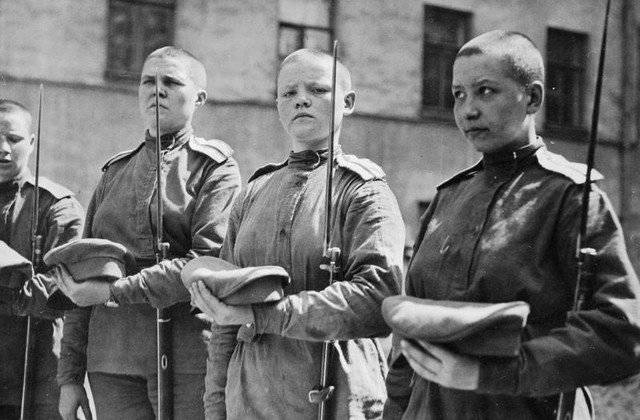
How to create a Mosin rifle - the most famous Russian weapon The First World
The SI Mosin rifle, the Russian “trilinear”, became one of the most recognizable and well-known symbols of not only the First World War, but also of all victories and defeats of Russian weapons in the first half of the 20th century, from the Russian-Japanese war 1904-1905 . and ending with the bloody epic of the Great Patriotic. In terms of its characteristics, at the time of its adoption, it was by no means particularly outstanding compared to its peers. Glory and a long fate - modifications of the "trilinea" are in service in different countries and are in demand among weapon lovers so far - have provided her with amazing simplicity and reliability.
“Shop” vs. “Monochargers”
Vigorous research on the creation of a multiply-charged rifle, operating on the "magazine principle" of the filing of the cartridge, was deployed in the second half of the nineteenth century in all the leading countries of Europe. Civil War 1861-1865 in the United States, in the battles of which Spencer and Henry’s magazine rifles were widely used, it was convincingly proved that the future was not for single-shot weapons, but for magazine-based infantry weapons.
As a reaction to these events, in 1882, by decision of the Minister of War, P.S. Vannovsky was created "Special Commission for testing shop guns." The Commission was headed by a prominent Russian gunsmith, Major-General N.I. Chagin, and its membership included gunsmiths, such as Alexander von der Hoven, a prominent specialist in the field of small arms and the author of many scientific papers. Since July, 1883, the artillery officer Sergey Ivanovich Mosin, who was then the head of the tool shop at the Tula Arms Plant, became involved in the commission’s work.
Commission N.I. Chagin did not, fortunately, become another “paper project”. In the incomplete seven years of her work, specialists and designers have studied and tested over 150 shop systems for military-style guns. Among them were the gun systems of famous foreign designers - Hotchkiss, Remington, Winchester, Fruvirta, Gra-Kropachek, Lee, Larsen, Mannlicher, Mauser and others. At the same time, various systems of Russian gunsmiths were studied, as well as the internal and side shops offered by them.
It is important to note that, although the Russian arms school was far from leading in Europe, nevertheless, among its representatives were many bright nuggets and inventors. All of them were either professional master gunsmiths (Kvashnevsky, Malkov, Varaksin, Ignatovich, Sergeev), or officers (Veltishchev, Tenner, Vitts, Lutkovsky, Tsymbalyuk, Mosin and others). In the framework of the Commission N.I. Chagin all had the opportunity to offer, test, discuss their products in the course of open discussions. The Commission worked openly, seriously and in good faith.
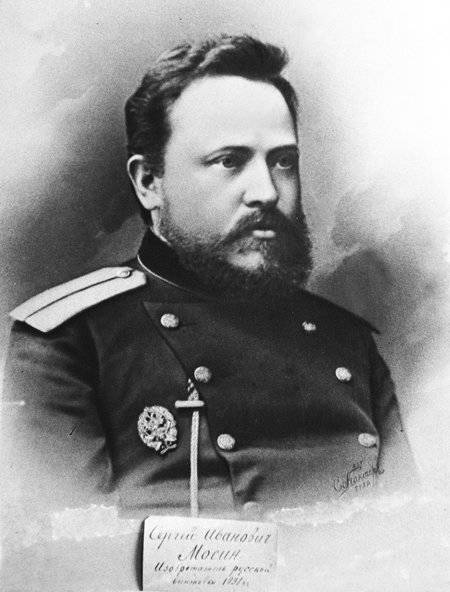
Despite the fact that in the entire arms world they relied specifically on magazine rifles, there were quite a few traditionalists in Russian army circles who seriously believed that even by the end of the 19th century the bullet was “still the same fool” ". Among them there were, sometimes, very respected figures.
The famous military theorist and teacher, General M.I. Dragomirov was not only a staunch skeptic about shop guns, but also firearms in general. “All the improvements in firearms,” wrote General Dragomirov, “only lead to the fact that the bullet becomes a little less stupid, but it has never been and never will be good.” In his article "Army Notes" M.I. Dragomirov called shooting from the magazine rifles "stupid chatter", basically defended the thesis that single-shot rifles are better for the Russian soldier, since they are easier to "shop" and are much easier to set up. General Dragomirov was unfortunately not alone in his negative perception of shop-guns.
The practical work of re-equipping the Russian army with a multiply charged magazine rifle became a reality only after the French “arms revolution”. In 1886, France was the first in Europe to adopt the Lebel 8-mm rifle with a barrel-mounted magazine and a new cartridge with smokeless powder and a shell bullet. Following France in Europe, a wave of re-equipment swept across rifles of a similar type. Immediately after the French began to rearm Germany (Mauser rifle, 1888), then Austria-Hungary (Mannlicher, 1889) and other countries: Great Britain (Lee-Metford, 1889), USA (Crag-Jurgenson, 1889) ), Switzerland (Schmidt-Rubin, 1889).
Not wanting to remain, as before the Crimean War, on the sidelines of the rearmament process, Russia was forced to dramatically intensify research and design work on the creation of a domestic magazine rifle.
Gunsmith Mendeleev
The invention of smokeless powder by Frenchman Paul Viel in 1884 opened a new era in the development of weapons, and not only manual firearms. Smokeless powder more than three times increased the energy of the shot in comparison with the traditional smoky (black) powder. Accordingly, the cartridges with it became lighter, the shot was more flattened, the position of the shooter was not indicated by a huge cloud of smoke from a rifle, smokeless powder was less afraid of moisture and was more durable during storage.
At the end of the nineteenth century, smokeless powder was already produced in Russia in industrial quantities. An important role in the creation of the industrial cycle of manufacturing smokeless powder was played by the works of the great Russian scientist D.I. Mendeleev. He was the one who had the idea to replace the thermal drying of the primary mass of gunpowder with chemical drying with alcohol, which immediately made the manufacture of smokeless powder easier and safer by several orders of magnitude.
The creation of a new magazine rifle chambered with smokeless powder was probably very much accelerated if it were not for the rash decision of Russian military minister P.S. Vannovsky on the preliminary (before the release of the magazine rifle) production of a reduced-caliber single-shot rifle.
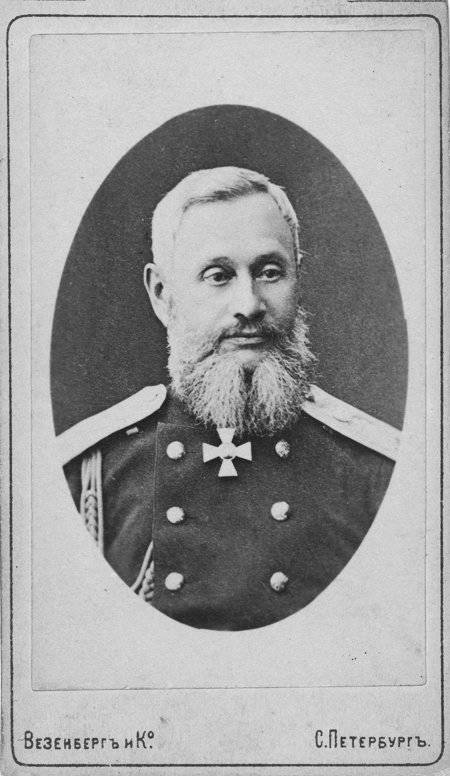
This decision, which put the Mosin rifle back into service for at least two years, was without a doubt the result of the strong power in the Russian military science. Their undisputed intellectual leader, General Dragomirov, did not get tired of saying and writing that his ideal of small arms was a small caliber rifle - "about eight millimeters, for a cartridge with pressed gunpowder and a bullet in a steel shell, but always single-shot."
Archaic reliability
The popular name of the Mosin rifle - “three-line” - comes from the old system of measuring the caliber of the rifle barrel in the “lines”. The Russian “line” is a pre-revolutionary technical measure of length equal to one tenth of an inch, or 2,54 mm. Three "lines" gave, accordingly, the caliber of a rifle, 7,62 mm, which is understandable to modern man.
The “trilinea” cartridge was created based on the 7,62-mm cartridge of Colonel N.F. Rogovtseva is modeled on the new 8-mm Austrian M1888 cartridge for that period, but equipped, unlike the latter, with smokeless powder and having a lead bullet in a nickel silver shell. The innovative nickel silver cap of the cartridge was more durable than the old copper one; it did not rust and did not wear out the barrel as much as the steel one.
The Russian 7,62R cartridge turned out to be highly technological in manufacturing, stable in ballistic characteristics. In energy, it was slightly inferior to the recognized Western cartridge "grandees": the English 7,71 mm cartridge Lee Enfield, the American 30-06 Springfield, or the German cartridge 7,92 Mauser. At the same time, already at the moment of adopting the Russian 7,62R cartridge, it had an unavoidable feature that gradually made this ammunition more and more archaic - the protruding rim, roughly speaking, the protruding edge on the bottom of the sleeve.
In cartridges with a sleeve with a rim, the ammunition stops in the chamber is carried out by the rim of the rifle in the stump (end) of the barrel. In more technologically advanced cartridges with an annular groove (i.e., without a rim, instead of it, a groove is made at the bottom of the sleeve), for example, in 7,92 mm Mauser cartridges, this emphasis is provided by the slope of the cartridge case into the cartridge chute ( which rest against the groove on the sleeve).

The last design in terms of production - and in the manufacture of the cartridge, and in the manufacture of the rifle - significantly more difficult, because requires increased accuracy of manufacture of the slope of the liner and the corresponding section of the chamber. In the continuous production of weapons and ammunition in the conditions of the Russian industrial culture, it was impossible to achieve acceptable agreement between the corresponding parameters of the cartridge case and the rifle chamber, according to the then military experts.
Only because of the technological backwardness of the Russian arms factories, the archaic, although very reliable, cartridge with the rim (welt) received, now forever, its characteristic name - the Russian 7,62 mm R.
The decision to put into service precisely the rant patron, of course, could not have been in vain. The main part of all difficulties overcome by S.I. Mosin in creating the “trilinea”, came to the elimination of the problem of “welcoming” the welt cartridge of other cartridges in the store and parts of the bolt group of the rifle. In order to achieve trouble-free charging, Mosin developed a special rifle feeder mechanism, the “cut-off reflector”, a simple but very important element of the rifle design. The function of the “cut-off reflector” is that the upper cartridge of the magazine filled with the movement of the bolt remains separated (clipped) from other cartridges in the magazine, and therefore is fed into the rifle chamber without interference. All other cartridges are under the ridge of the "cut-off reflector", which is released only at the relevant, strictly fixed positions of the shutter.
Competition with Leon Nagun
In 1889, S.I. Mosin put his three-line (7,62 mm) infantry rifle, based on his previous, single-shot model, to the competition of the Ministry of War. Some constructive ideas of this rifle were borrowed, apparently, from the Austrian rifle of the Mannlicher system, tested in the same year, with a row loading (one above the other) of a mid-size shop.
A little later, Mosin’s products for the same competition were presented with a Nagant rifle, which was actively lobbied in the Russian military with its enchanting energy by Belgian entrepreneur Leon Nagan. In October 1889, he personally brought a rifle of 8 mm (3,15 lines) and 500 cartridges to it to the newly established “Commission for the development of small-caliber rifles”. Thus began a fairly sharp competition between the Russian and Belgian designers.
Belgian Leon had very good connections on all floors of the Russian military department. Subsequently, he was able to successfully "punch" into the armaments of the Russian army a very controversial, in terms of providing speed of fire, the model of his revolver - the famous "Nagant."
In the competition with the Mosin rifle, Leon Nagant’s initial lobbying positions were somewhat weaker: just the day before Belgium refused to produce the Nagant system rifle, which lost in the competition in all respects to the German Mauser rifle. Both rifles passed rifle and operational tests in the Izmailovsky, Pavlovsky, 147 Samara regiments and in the Guards First Battalion.
It is curious that the soldiers and officers of the military units who conducted the tests unanimously spoke in favor of the Nagant rifle. Later in the Russian Defense Ministry, their clearly unpatriotic decision was explained by the fact that Mosin's rifle rifles were made at the Tula Arms Plant, allegedly in a hurry, which could not, say, not affect the overall quality.
During the voting in the “Commission for the development of small-caliber rifles”, the majority of the Belgian Nagant rifle were also in favor of adopting the Russian army. 14 people voted for the Nagan rifle, including the most authoritative experts Chagin, Rediger and von der Hoven. For the Mosin rifle spoke only 10 experts.
The future of the Mosinskaya “trilinea” was decided thanks to the tough position of the weapons and ammunition factory inspector V.N. Bestuzhev-Ryumin and Professor of the Mikhailovsky Artillery Academy V.L. Chebyshev. Their decisive argument, which was also supported by Chagin and Rediger, was the indication that the Mosin rifle was much simpler and cheaper to manufacture.
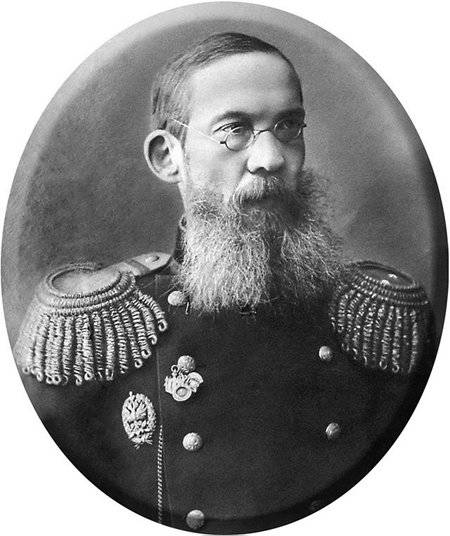
In addition, the production of the Mosin rifle was technologically based on the machines that were already producing the Berdan rifle in service with Russia, which made it possible to start the production of the Russian gun much faster than the gun of Nagant. V.L. Chebyshev, whose authority among the gun specialists of that time was indisputable, specifically emphasized in his report that operational checks showed the absolute advantage of the Mosin rifle. The delays in firing for the entire time of testing the Mosin rifle were recorded 217, while the rifle of the Nagant system for the same number of firing gave 557 failures.
“I cannot agree with the conclusion of the majority of experts,” Professor Chebyshev emphasized in the final of his report, “that both tested systems are equally good, this is obvious if only because the Mosin system has huge advantages over the Nagant system.”
As a result of several stages of discussion, the Commission adopted the SI rifle. Mosin. However, taking into account that members of the Commission Kabakov and Rogovtsev also took part in its design, and some elements of the system were proposed by L. Nagan, it was decided to call the rifle “the Russian three-line rifle of the 1891 model of the year”.
Tsar Alexander III, who for some reason is called the nationalist king, having familiarized himself with the final report of the Commission, deleted the word “Russian” from the name of the rifle. So a wonderful product. Mosin, in contradiction to all international arms traditions, received a completely faceless - without national and design pointers - the serial name: "three-line rifle of the 1891 model of the year."
No upgrade required
In the well-known book of Vladimir and Valentin Mavrodin "Russian rifle" it is stated that the Mosin rifle of the 1891 model of the year was "the best of all foreign similar models of small arms". It is unlikely that such a categorical assessment is objective - the British Lee-Metford rifle or the famous German Mauser of the 1888 model, in no way inferior to the Russian “trilinear”, and exceeded it in a number of important positions. However, what was unquestionably the Russian rifle was good, because it was in its unique simplicity and reliability, in maintainability and undemanding of manufacturing technology.
The simplicity of the “Mosinka” design is probably a kind of weapon absolute. Suffice it to say that the rifle bolt - the most difficult part of any gun - consists of only seven parts, and disassembly-assembly of the bolt can be performed without any tools. This incredible simplicity provided a very long release of the rifle without any significant modernization - there is simply nothing to modernize in the Mosinka. A very important advantage of the rifle is the presence of a detachable battle mask of the bolt, which, if broken, could be replaced with any other part — all parts of the mosquito, regardless of the manufacturer, are interchangeable.
In 1891, simultaneously with the infantry modification of the rifle, the dragoon and Cossack three-line rifles were adopted.
The infantry rifle weighed without a bayonet with an empty 3,99 kg magazine, and after taking the barrel lining, protecting the shooter’s fingers from the burn, and a long ramrod, its weight increased to 4,2 kg without a bayonet. Of the infantry rifles of the European powers, the Mosin rifle was the longest - 1306 mm.
The dragoon type rifle was seven centimeters shorter (the barrel instead of the 80 cm became the 73 cm). It almost did not affect the weight of the rifle - it only decreased by 300. The Cossack rifle differed from the dragoons only by the lack of a bayonet, and for the rider it was uncomfortable - heavy and poorly balanced.
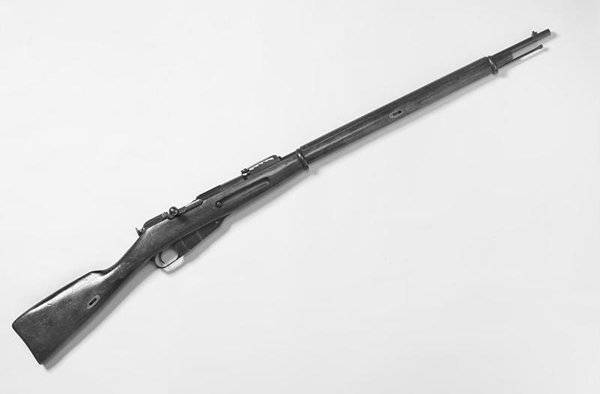
Since the beginning of the First World War, the Cossacks began to re-equip themselves with the trophy cavalry "Mauser", which, although it was also quite heavy, but at least significantly better balanced.
In the shop "Mosinki" placed five rounds. The initial bullet speed of a standard factory cartridge was 620 m / s. In the special literature comes across an indication that the Mosin rifle bullet with 50 steps punched 16-35 one-inch boards. If the first digit (16 boards) can still be somehow believed, then the second one is clearly inspired by “hurray-patriotic” inspiration. This same “inspiration” also includes such a frequently encountered indicator in the literature of a rifle combat as the greatest target range, which is defined in 1900 meters.
The problem is that the “sighting range” in 1900 meters can be targeted only to a railway carriage and that, probably, if it will be left overboard to the shooter. A full-length human figure is completely covered by a rifle front sight while aiming at 300 meters. At 600 meters, aiming at a person with the help of an open sight is the same as aiming at him without any sight at all - at “maybe”, along the barrel. Even with the use of a fourfold optical sight, the practical range of fire from the “Mosinka” (i.e., the distance at which you can really aim and actually reach) hardly exceeds 800, the maximum is 900 meters. However, all the infantry rifles of Europe, produced in one generation with the “Mosinka”, provide approximately the same practical result.
Abroad, the S.I. Mosin rifle is known as the Mosin rifle system, or Mosin-Nagant, in memory of the borrowing of some elements of the Nagant system into the Russian trilinear design. The Artillery Committee of Russia issued a decree of 25 on November 1891 to award Colonel S.I. Mosin the prestigious Great Mikhailovsky Prize, which is awarded once every five years.
The adoption of the Mosin infantry rifle has required significant costs for the organization of the full production cycle, including gunpowder, cartridge and weapon components. The Ministry of War has requested 156,5 million rubles for this purpose. On the report of the Minister of War, Tsar Alexander III imposed a resolution uncharacteristic for him: "The sum is terrifying, but there is nothing to do, it is necessary to proceed." The Russian army never later regretted this decision of the Tsar-Peacemaker.
Information